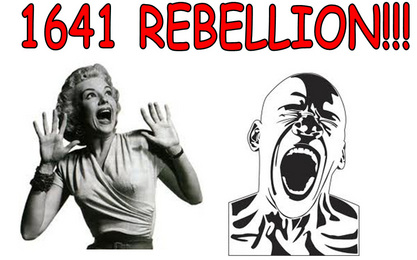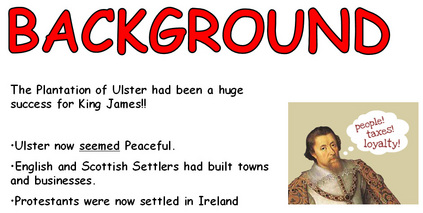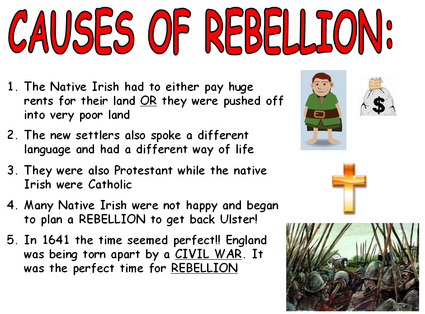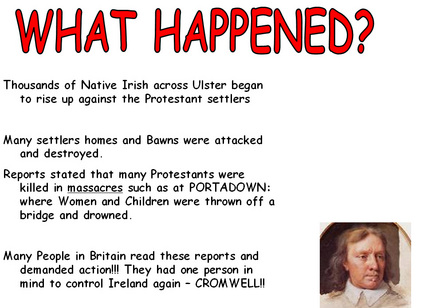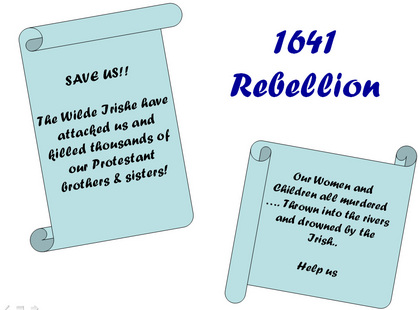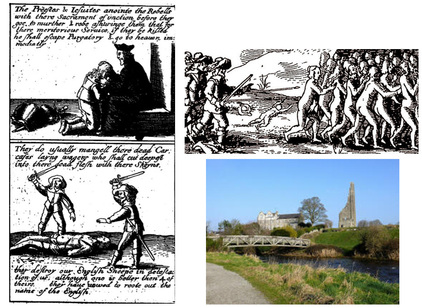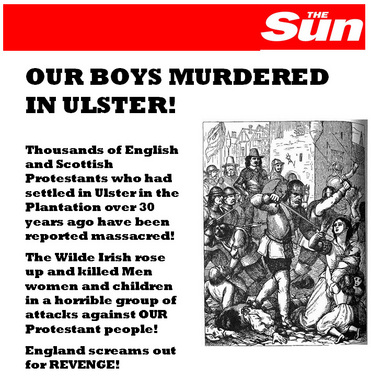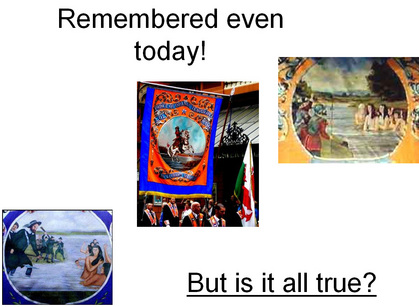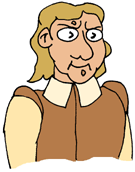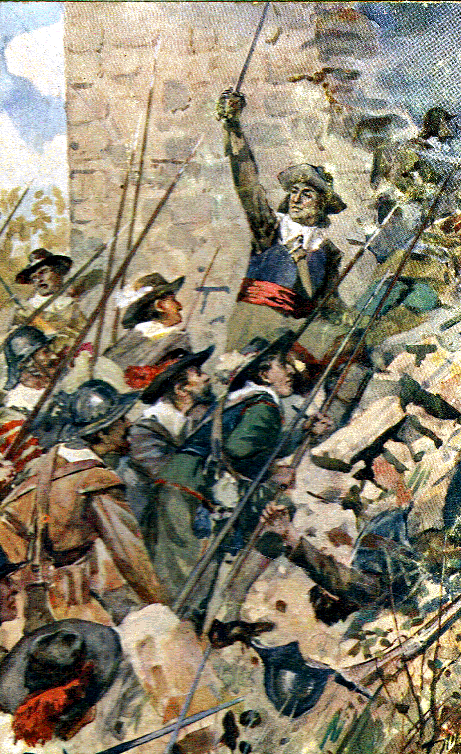OLIVER CROMWELL AND IRELAND
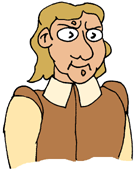
NO figure in Irish history creates as much continued hatred as OLIVER CROMWELL!!!! People in Ireland still often describe the curse of Cromwell!!!!
So we have to focus on THREE QUESTIONS:
So we have to focus on THREE QUESTIONS:
- WHO is this man?
- WHY is he so hated
- Is it FAIR that he is still so hated?
WHO WAS CROMWELL?
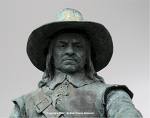
Cromwell was one of the most famous men who ever lived in England!
Cromwell however came to Ireland for a reason! It was almost all to do with one huge event in the year 1641!
- There he is famous for fighting for the right of PARLIAMENT to have a powerful voice rather than the KING.
- He led an army, fighting for Parliament against the King of England, King Charles 1 and won! He even had the King beheaded !!
Cromwell however came to Ireland for a reason! It was almost all to do with one huge event in the year 1641!
One part of history is to be like a detective. We have to try to come to a conclusion over what happened in the past based on EVIDENCE.
Of course evidence from the past may be from different sources - and may be BIASED.
1641 is one period of history where we know there was undoubtedly a Rebellion in Ulster and that many were killed. However in England at the time reports suggested up to 150,000 Protestants had been killed. Books and Pictures showing the 'massacres' were bestsellers. We have to try to sort out what was FACT and what is FICTION. Certainly however Cromwell heard the reports and was determined to act !
Of course evidence from the past may be from different sources - and may be BIASED.
1641 is one period of history where we know there was undoubtedly a Rebellion in Ulster and that many were killed. However in England at the time reports suggested up to 150,000 Protestants had been killed. Books and Pictures showing the 'massacres' were bestsellers. We have to try to sort out what was FACT and what is FICTION. Certainly however Cromwell heard the reports and was determined to act !
1641 weblink - were your ancestors involved?
find out!
WEBLINK: WWW.1641.TCD.IE
WHY DID CROMWELL COME TO IRELAND?
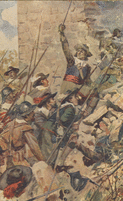
Cromwell came to Ireland in 1649 with a well trained professional army of several thousand soldiers. Cromwell was a deeply committed Protestant and mistrusted Catholics. He came to Ireland for a number of reasons:
Cromwell was determined to teach the Irish a lesson and to show them that he was in charge. He also wanted his war in Ireland to be over as quickly as possible.
However, the Irish troops soon defended themselves behind strong town walls. Cromwell found himself not fighting battles but sieges. This was a long and difficult way to fight.
- Firstly, to put an end to the Irish rebellion, help save the Protestant settlers and take revenge.
- Secondly, he wanted to kill any of the remaining Kings supporters in Ireland
- Thirdly, he wanted to stop the threat of Ireland being used as a base for Catholic countries to attack England.
Cromwell was determined to teach the Irish a lesson and to show them that he was in charge. He also wanted his war in Ireland to be over as quickly as possible.
However, the Irish troops soon defended themselves behind strong town walls. Cromwell found himself not fighting battles but sieges. This was a long and difficult way to fight.
|
The first town to stand in his way was DROGHEDA.
|
|
Cromwell came to Ireland to stop the rebellion that had went on since 1641.
Cromwell's effect on Ireland and complete control when he had finished was so complete that Ireland would remember this period of time for centuries with bitterness. Is Cromwell's bloodthirsty reputation deserved however or was he just doing what any general at that time would do? |
CROMWELL - THE RESULT
Cromwell did bring peace to Ireland and ended the Rebellion . He also created a huge amount of hatred on the island which would remain for centuries
© J Wishart 2016


